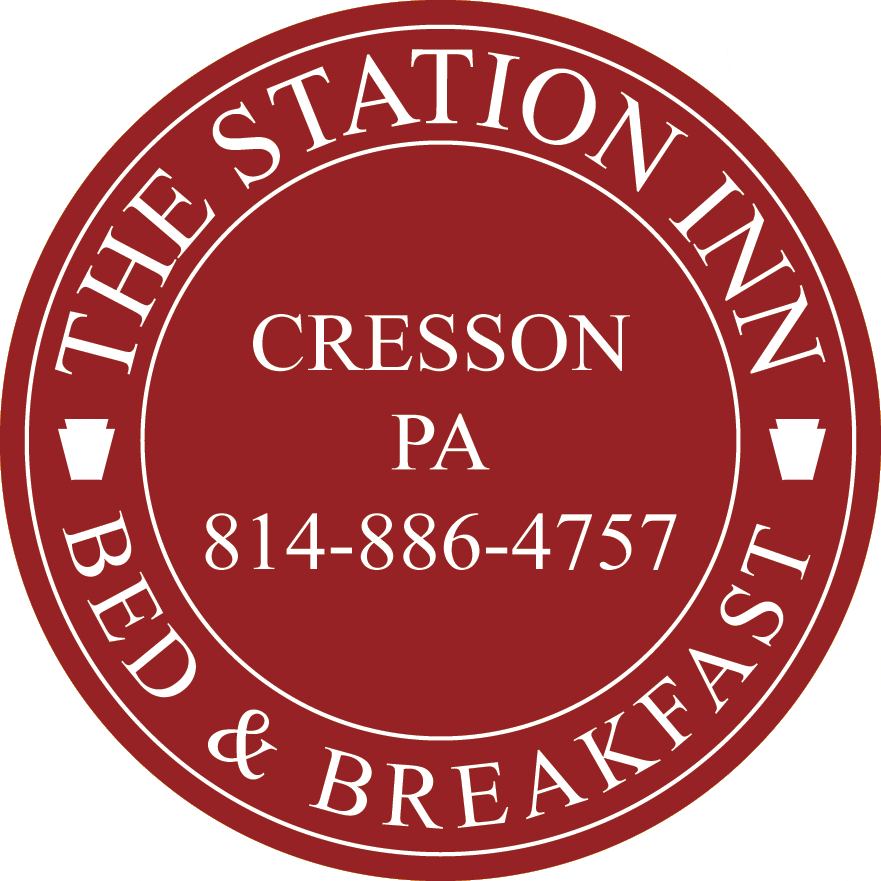This article about the Summit of the Alleghenies originally appeared in the Conrail Historical Society‘s “Conrail Quarterly” Magazine, 3-4Q2022 issue. It has been republished here, slightly modified, with permission.
Cresson, PA – a small town of roughly two thousand people sitting atop a long ridge, long a crossroads of commerce. The Allegheny Portage Railroad first built here, connecting the Pennsylvania Canal system in 1834. The mighty Pennsylvania Railroad began service in 1854, and purchased the remnants of the defunct canal predecessor a few years later. In 1866, the Callan House hotel was built across Front Street from the PRR’s passenger station. The William Penn Highway traverses the area, including the latest incarnation of US Route 22 which in some locations shares a right-of-way with the 1850’s era New Portage Railroad.
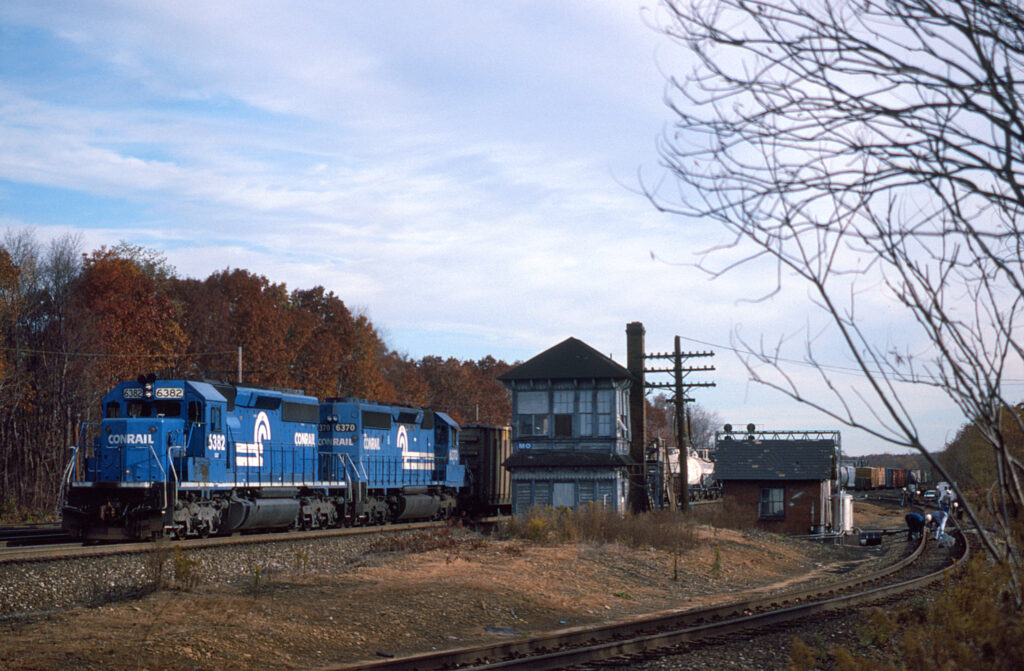
But in 1993, none of that was important to me. A Railpace Newsmagazine article from the early 1990s enticed a friend and I to talk his parents into driving us west from our native Lehigh Valley area, and spending a couple of nights in Altoona in order to photograph a cluster of Conrail’s remaining operating control towers. We, in our early teens, were excited to see busy mainline action in historic Altoona, visit Horseshoe Curve, walk the lines of dead locomotives at the shops, check out the Gallitzin Tunnels. And there was one more tower to check out in this place called Cresson.
Cresson: The Summit of the Alleghenies
Cresson turned out to be an instant favorite. Three mainline tracks of Conrail’s Pittsburgh Line, with PRR position light signals mounted to a railroad overpass. MO Tower’s operator could be heard barking out orders to mainline helper sets of SD45-2s to tie on or cut off, fuel and sand at the pit, and so on. Two coal branches radiate out from the area; Conrail’s Irvona Secondary to the north east and the Cresson Secondary which connected a network of former PRR and NYC branches as well as Bethlehem Steel road Cambria & Indiana. Telegraph poles lined the south side of the right-of-way, supplying communications and signal code east and west. The former division office building stood resolute at the west side of the complex, no doubt full of stories from “old head” railroaders. Last but not least, the locomotive facility here sported a large white fuel tank with a Conrail can opener logo, while SD45-2 helpers and GP38-2 coal units scurried about taking their turns for service. On weekends, light engine movements of these units would arrive and depart for places like South Fork or Conemaugh.
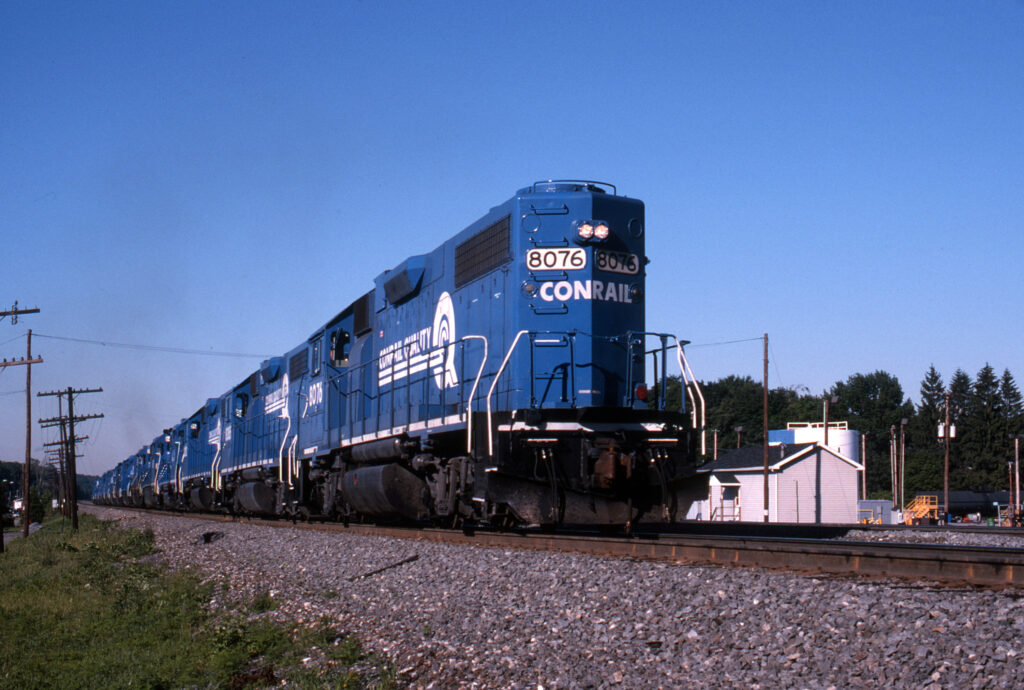
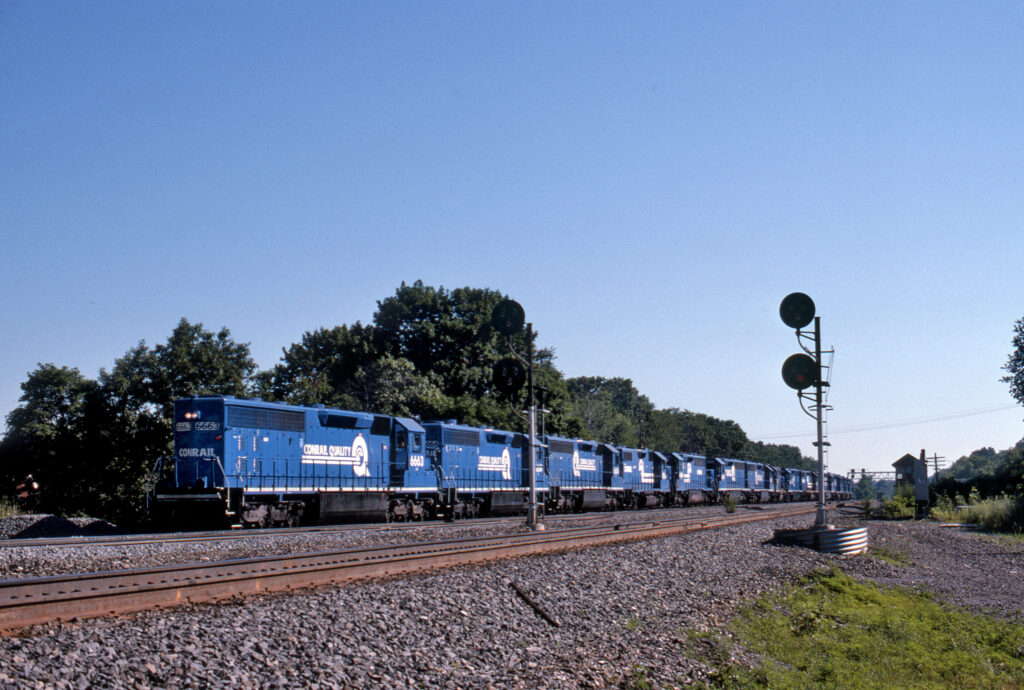
Operations here were quite a contrast to my home town of Allentown, PA. I was not used to three mainline tracks, where it was common to see two eastbounds racing each other upgrade. For my first visit in 1993, EMD and GE standard cabs were still featured predominantly on road trains, and the locals were served by GP38-2’s. Mornings would see heavy eastbound freights out of Conway (near Pittsburgh) and wesbounds that originated overnight – and were thus exciting trains to see here in daylight. CAPI, TV3, ALPI, OIPI. Two Amtraks plied the rails here, the Broadway and the Pennsylvanian. And the frequent helper moves were dominated by former Erie Lackawanna SD45-2 units that featured giant 5,000 gallon fuel tanks.
My next visit to the area was in 1994, where we spent a night or two in a curious Bed & Breakfast that had been advertising regularly in Railpace Newsmagazine. We found The Station Inn B&B’s breakfast to be simple and the accommodations welcoming. But what I remember most about that trip was my excitement to get to sit out on the front porch much later than I should have, watching the nightly sequence of eastbound Mail trains that all passed thru Allentown overnight… the “Conrail, Lilly, Pennsylvania…” robot voice of the defect detector west of us forewarned of a fleet of these TOFC trains: TV-22 to Baltimore, Mail-4 from St. Louis, Mail-8 from Chicago, Mail-44 from Indianapolis. In 1994 Conrail was still in the habit of assigning high-horsepower four-axle units the “van” trains, such as B40-8 and B36-7’s, as well as GP40 and GP40-2’s, although the newer C40-8W and SD60M models were slowly displacing the four-axles.
I returned to Cresson two years later, spending a single morning trackside in the summer of 1996. MO Tower was still in service in 1996, although rumors of its closing were getting more frequent. A major change had taken place the year prior, when Conrail (with financial support from the Commonwealth of Pennsylvania in an early example of a public-private partnership) removed the Cresson Secondary overpass, and replaced the venerable position light signals with the familiar tri-light Type G’s, all to make room for doublestack container trains. The first regularly scheduled “stacks” across Pa ran in September, 1995: TV-11/TV-12 running between E-Rail NJ and Chicago, and TV1/-TV-2M between Morrisville and Chicago. I was excited to lens a daylight TV-12 this day.
More excitement ensued, however. During these years, Thursday-only eastbound TV-556 ran east across New York State featuring foreign power rarely seen in PA, often including Rio Grande and Southern Pacific locomotives. Occasionally one would get lucky when the timing worked out to send the 556 power set west across PA, and so it was this fine summer morning when OIPI showed up with a selection of grimy EMD 20-cylinder delights in the form of SP and DRGW SD45s.
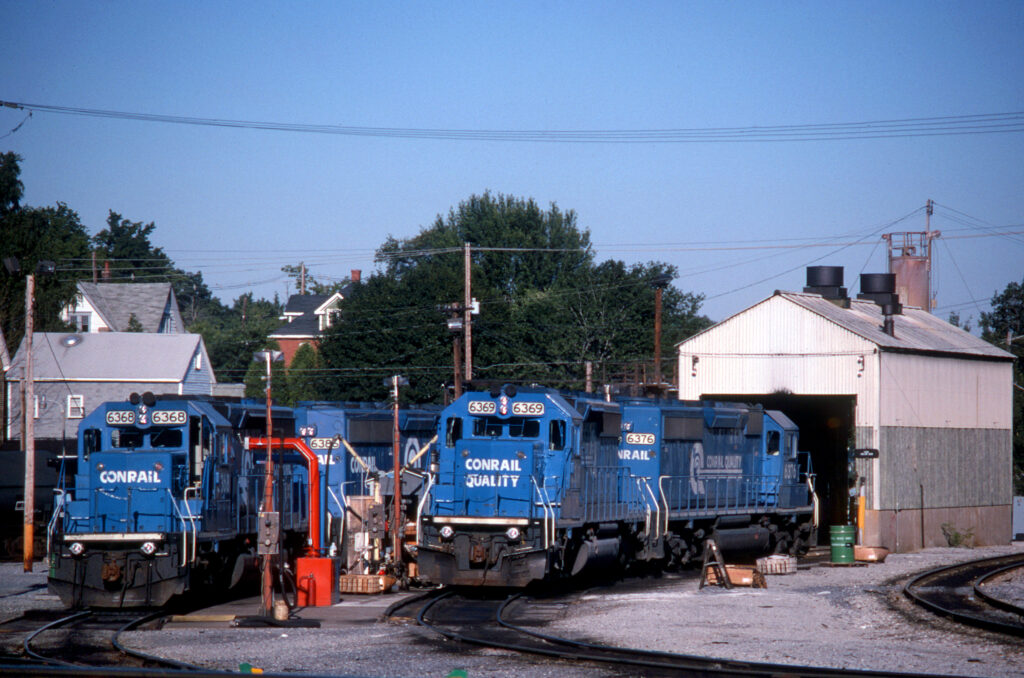
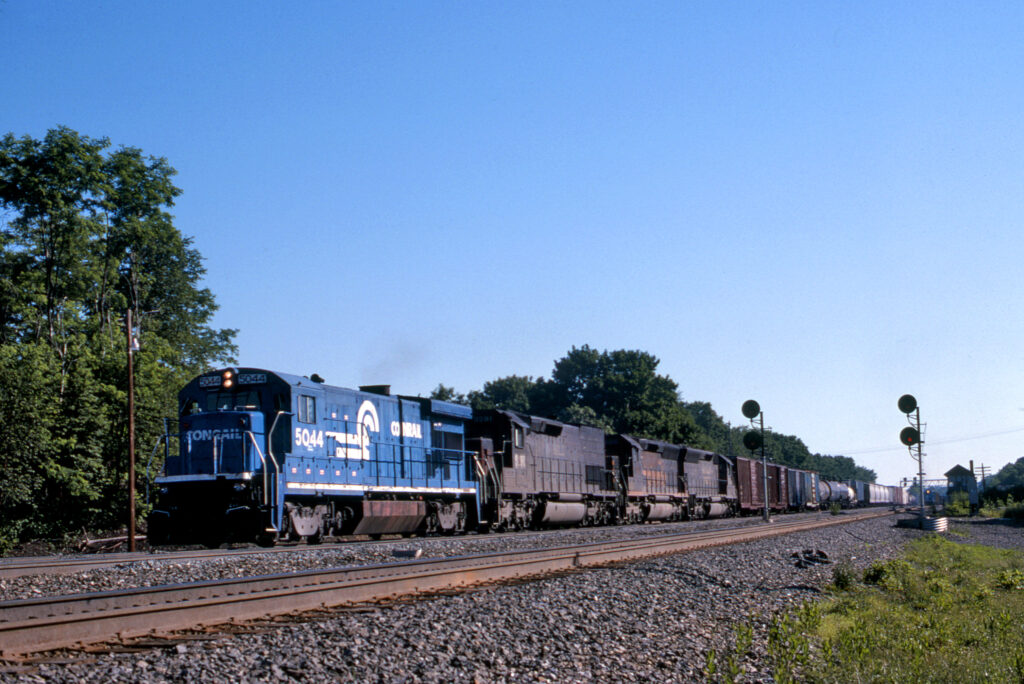
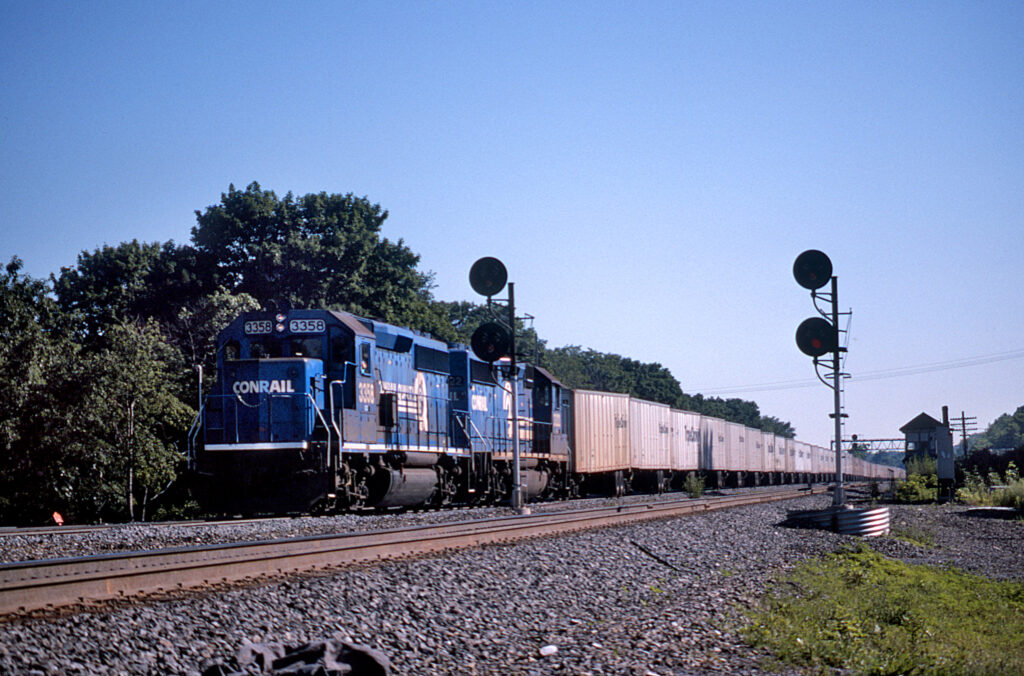
On this OIPI, I almost didn’t notice the B36-7 leading – four-axle GE locomotives were often used during this time frame, whenever a cab-signal equipped locomotive was needed to lead a set of run-through power across PA. By this point, four axle units largely waned from appearances on TOFC trains and were more likely to be found mixed in with six-axle power on various freights. Newer SD60M and SD60I locomotives, along with several orders of C40-8Ws had taken their place. The “Locomotive Management Services” C40-8W’s were also on the scene, painted CR blue and marked only with LMS lettering, numbered in the 700 series. The popular 5000-horsepower SD80MAC began to make regular appearances in 1996, often running in pairs on manifest freights to and from Conway, Pa.
1997 brought the announcement that CSX Transportation intended to merge with Conrail, and the corporate battle between CSX and Norfolk Southern that resulted in the divide-and-conquer strategy of splitting Conrail in two. By 1998 it was known that the bulk of Conrail’s former Pennsylvania Railroad lines would fall into NS control, and many railfans sought to document Conrail’s final days. And by 1998, it became an annual tradition for my friend Peter McGilligan and I to make an October trip in pursuit of fall foliage, trackside of course.
Peter and I “tacked on” a couple nights at The Station Inn subsequent to a wonderful trip to Ohiopyle. We focused our photographic energy on the Staple Bend viaduct near Mineral Point, and note that once again, rail operations in the Allegheny Mountains had evolved yet some more. All of the helper movements noted were pairs of Conrail SD40-2s; the SD45-2s were less common and would occasionally pop up on a Conway manifest. A second order of blue-and-white SD80MAC’s was cancelled, and replaced with two new locomotive types for Conrail. A group of SD70MACs were ordered to CSXT specs, and a group of standard-cab SD70s were ordered to NS specs. On our trip in 1998, we lensed a pair of freights each led by SD70s in the 2500-series, already numbered to fit into the NS roster.
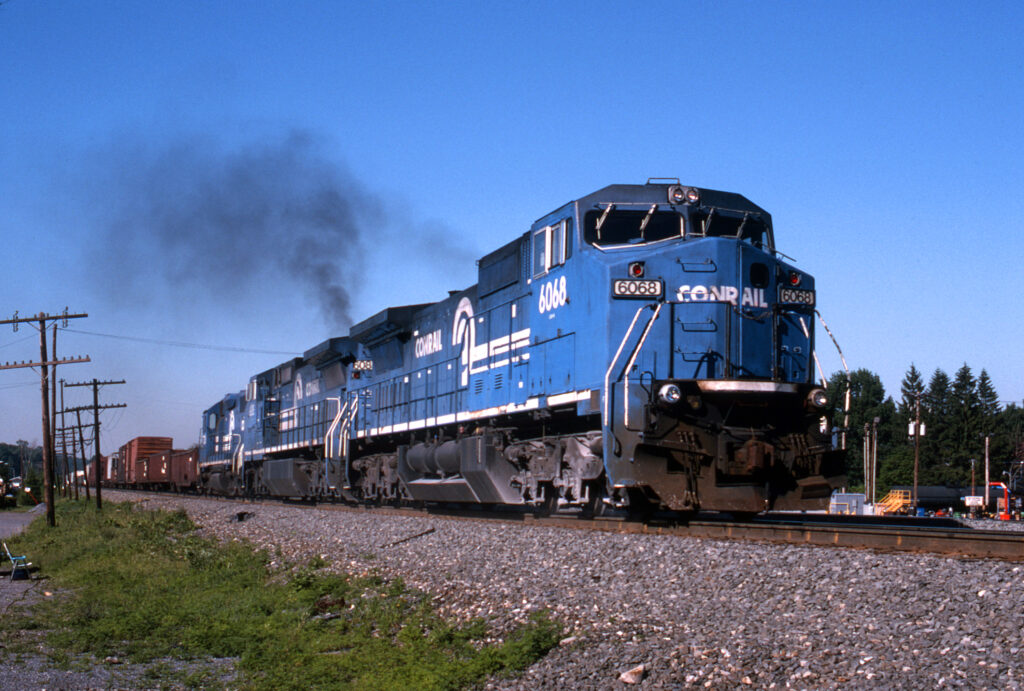
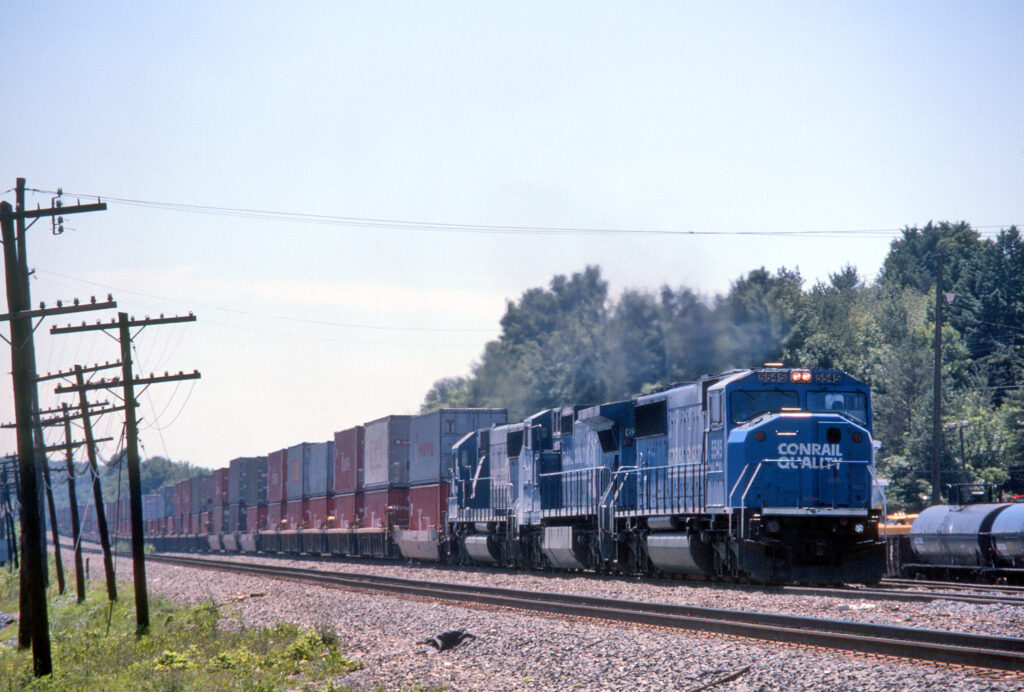
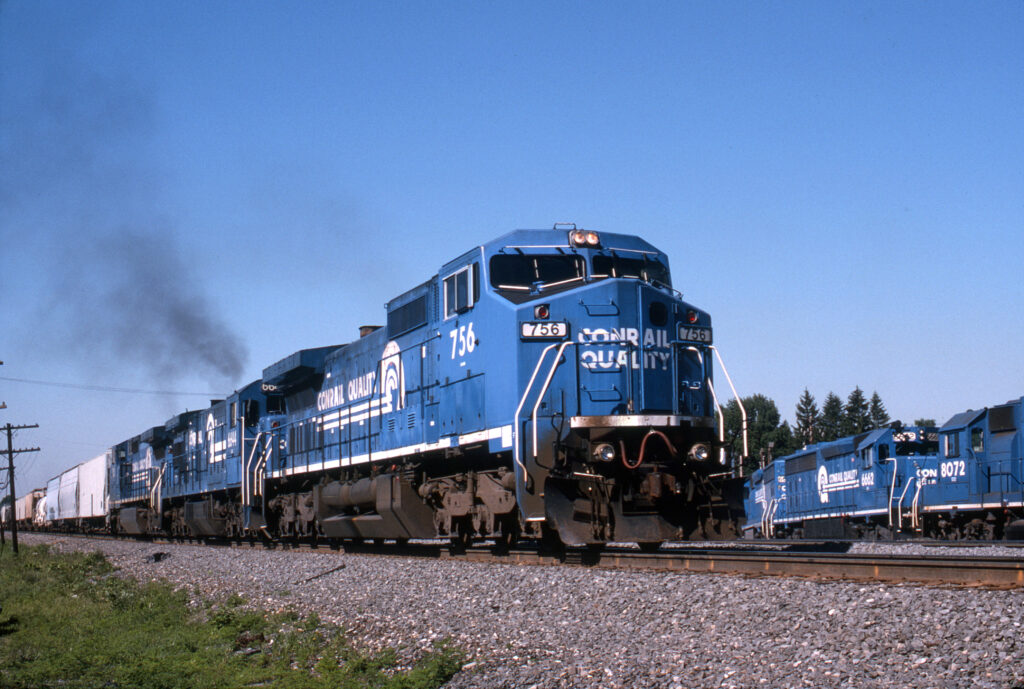
Operationally, Conrail dabbled with freight schedules, occasionally extending freight symbols to Elkhart; Oak Island westbound became OIEL; Allentown ALEL, Baltimore BAEL, and so on. After only a month or two many reverted back to the long-standing OIPI, ALPI, BAPI, etc. New traffic in the form of automotive was introduced in late 1995 as a result of the PA clearance project, and by 1998, westbound ML-401 and eastbound ML-440 had been rerouted off of the Southern Tier route, running between Doremus Ave. in Newark NJ and Detroit. The TV-1, TV-2M, TV-11 & 12 continued handling doublestacked containers, along with the occasional sighting of a TV-200 or the very occasional rerouting of a River Line train like TV-80 or TVLA. Some unusual weekend-only trains were added to the schedule, TV-0 and TVLT, bringing priority traffic from Chicago for Monday-morning delivery.
A whole new article would be required to address the changes that would come to Cresson and the Pittsburgh Line in the Norfolk Southern era. I made many return visits beginning in late 1999 and in the following years, aided by a move to the Pittsburgh area.
The Summit of the Alleghenies Today
Fortunately, although much has changed, Cresson is still a hotspot on today’s NS Pittsburgh Line, and The Station Inn, under new management, continues to welcome railfans to come explore the area. While I am still excited to get back to Cresson, the Conrail era is where I like to think back to. So, the mid-nineties is where I’d like to leave things off – memories of blue locomotives hauling heavy manifests, unit trains of yellow-ended PPLX coal hoppers, endless lines of trailers-on-flatcars, with blue SD40-2 helpers in notch 8 lending a hand. Photographing trains by day, watching the sky grow dark, intently watching the eastbound signals at MO, waiting for one of those red signals to flicker over to green, foretelling of yet another eastbound conquering the Allegheny Mountains.
J. Alex Lang was a member of The CRHS Board of Directors from 2020-2022 and is a lifelong Conrail enthusiast. He enjoys a career in information technology, specializing in short line freight railroads. He and his wife Leah purchased The Station Inn B&B from Tom Davis’ family in May of 2022, continuing to operate this Cresson railfanning landmark as a B&B. This article was featured in Conrail Historical Society‘s “Conrail Quarterly” Magazine, 3-4Q2022 issue, and appears here courtesy of CRHS.

